Acarajé, Iemanjá and Jorge Amado in Salvador da Bahia (EN)
The first step of my solo trip in Brazil: Salvador de Bahia. A bit of my cultural discoveries (Gilberto Gil, Jorge Amado..), extracts from my travel diary, and local recommendations to explore the city.
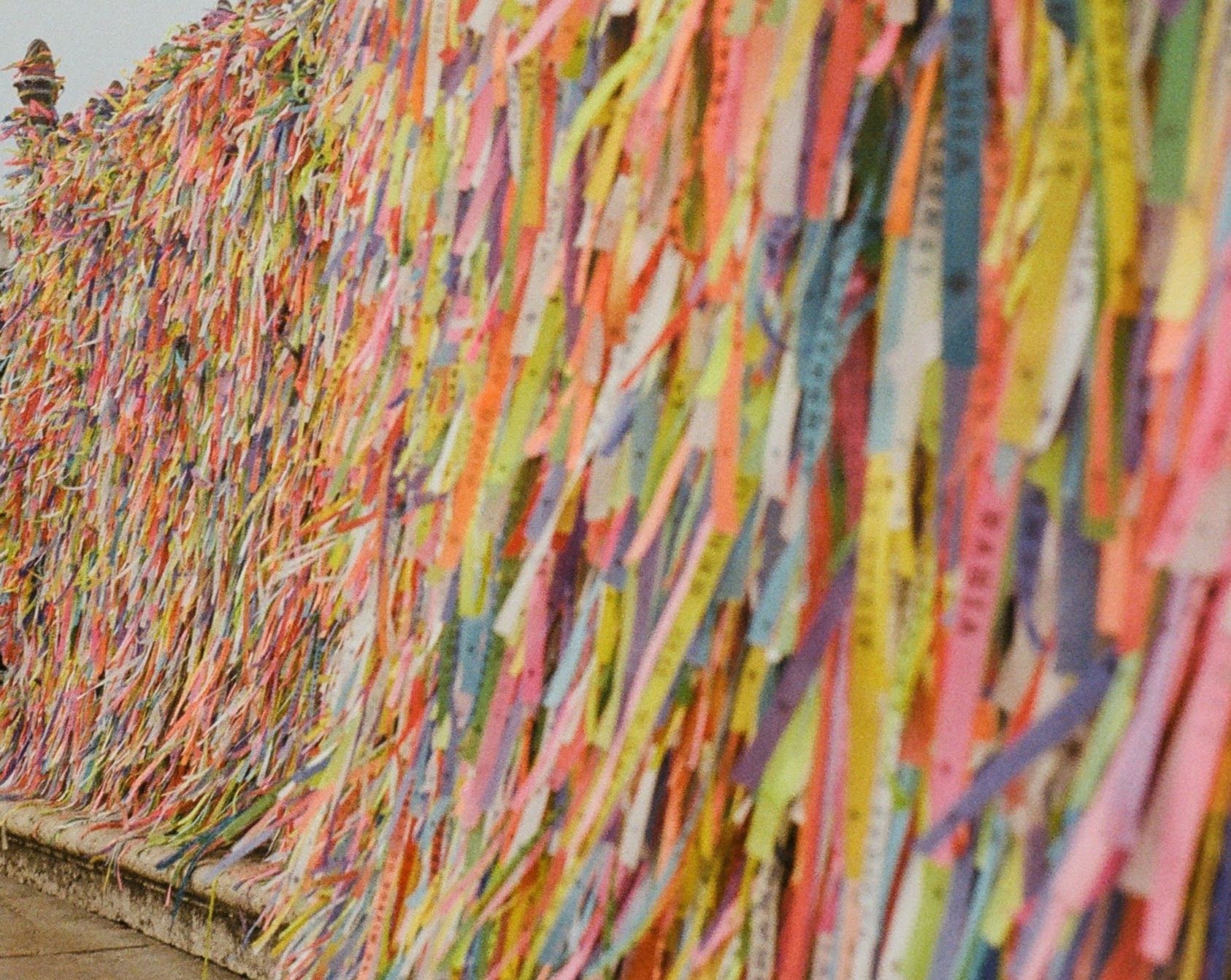
At the beginning of 2022, I spent a few months travelling alone in Brazil. My journey started in Rio de Janeiro, a city I already knew quite well, before heading from Bahia to the Amazon. I spent four months on the road, in order to get to know the language and various aspects of the Brazilian culture a little better. These next articles will be excerpts from my travel diaries, along with some cultural discoveries I made along the way!
February 2022, Salvador da Bahia
And here I am in Salvador da Bahia for the first part of my solo trip. I wanted to get to know this city, capital of the state of Bahia. I am interested in the whole traditional, musical and culinary culture which has its roots in the mixture of African and Indigenous populations, due in particular to the tragic history of colonisation and slavery.
Rua Direita de Santo Antonio:
The touristic areas are quite safe, and everyone is really friendly. I stayed in an Airbnb located right next to the most touristic area, Pelourinho, in a colourful street that is a bit more alternative: the Rua Direita de Santo Antonio. It's an artistic neighbourhood, with a real local life, and where young and old, white and black, rich and poor, artists and workers live together, which is relatively rare in Brazil. My neighbours were always listening to music, singing, and even playing the flute and trumpet! In the morning I was often woken up by the crowing of a rooster (?!).
After spending almost a week there, here are some places I liked:
💛 I LIKED- Restaurante Poró
- Cafélier
- Aboca: especially for the Thursday evenings. Follow their Instagram for more information
Following the street where I was staying, towards Pelourinho, is the Benin House, a memory centre dedicated to the culture of this country from which many slaves were taken by force to Brazil. It was founded by Pierre Verger, a French photographer and ethnologist, and by the musician and former minister of culture Gilberto Gil, among others.
WORTH A LOOK 👀
To learn more about Gilberto Gil's relationship with Africa: https//artsandculture.google.com/story/hQUhmYutbCyOLg
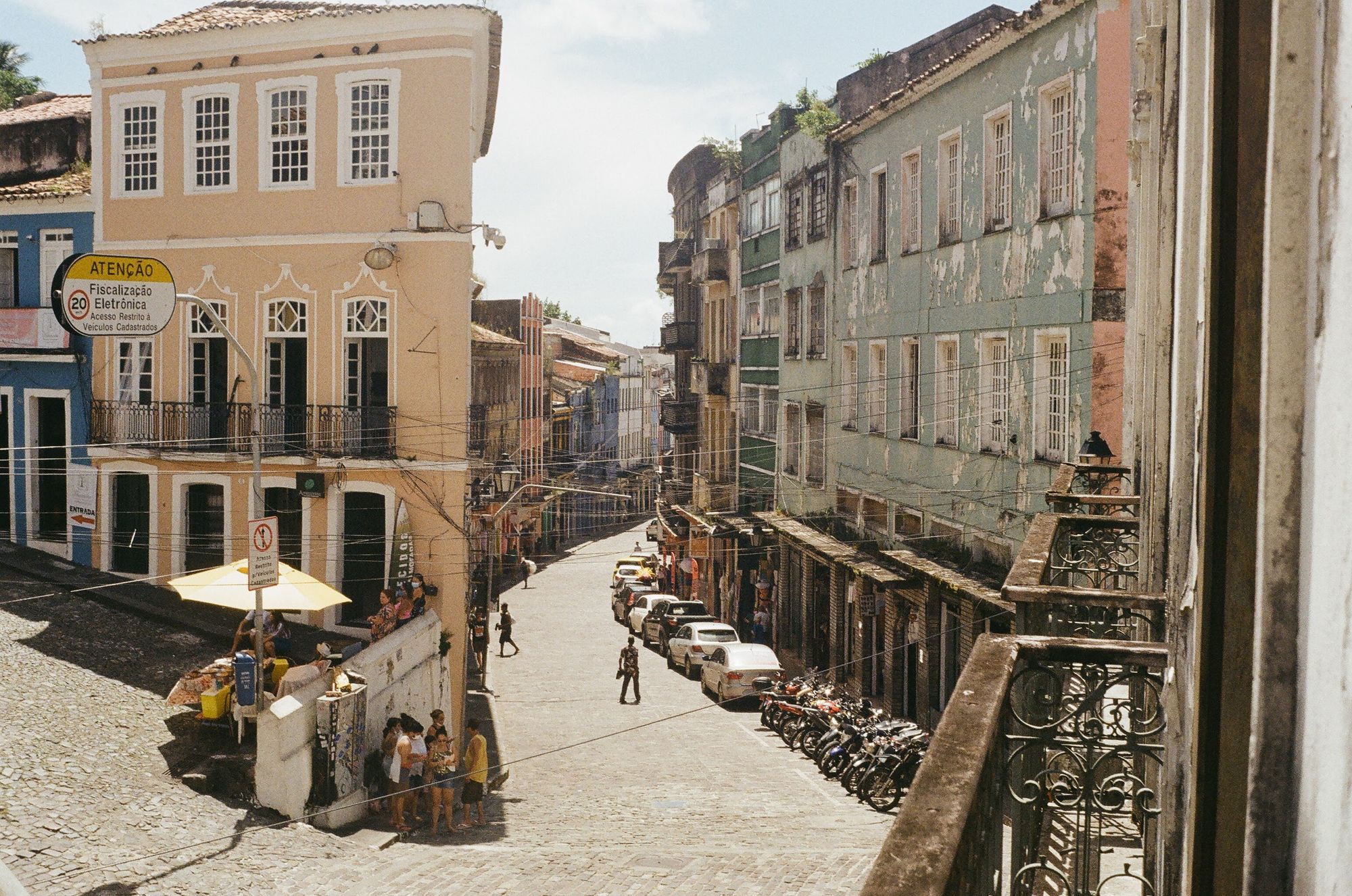
Pelourinho:
Pelourinho is the historical (and touristic!) district of Salvador. From 1558, Pelourinho held the largest slave market on the continent. After Brazil's independence and the official end of slavery, the district was gradually restored and is now a UNESCO World Heritage Site.
Today it is particularly well preserved, colourful and dynamic: day and night, music comes from the inner courtyards and many local groups (the best known being Olodum) or capoeiristas practice and perform in the small cobbled streets.
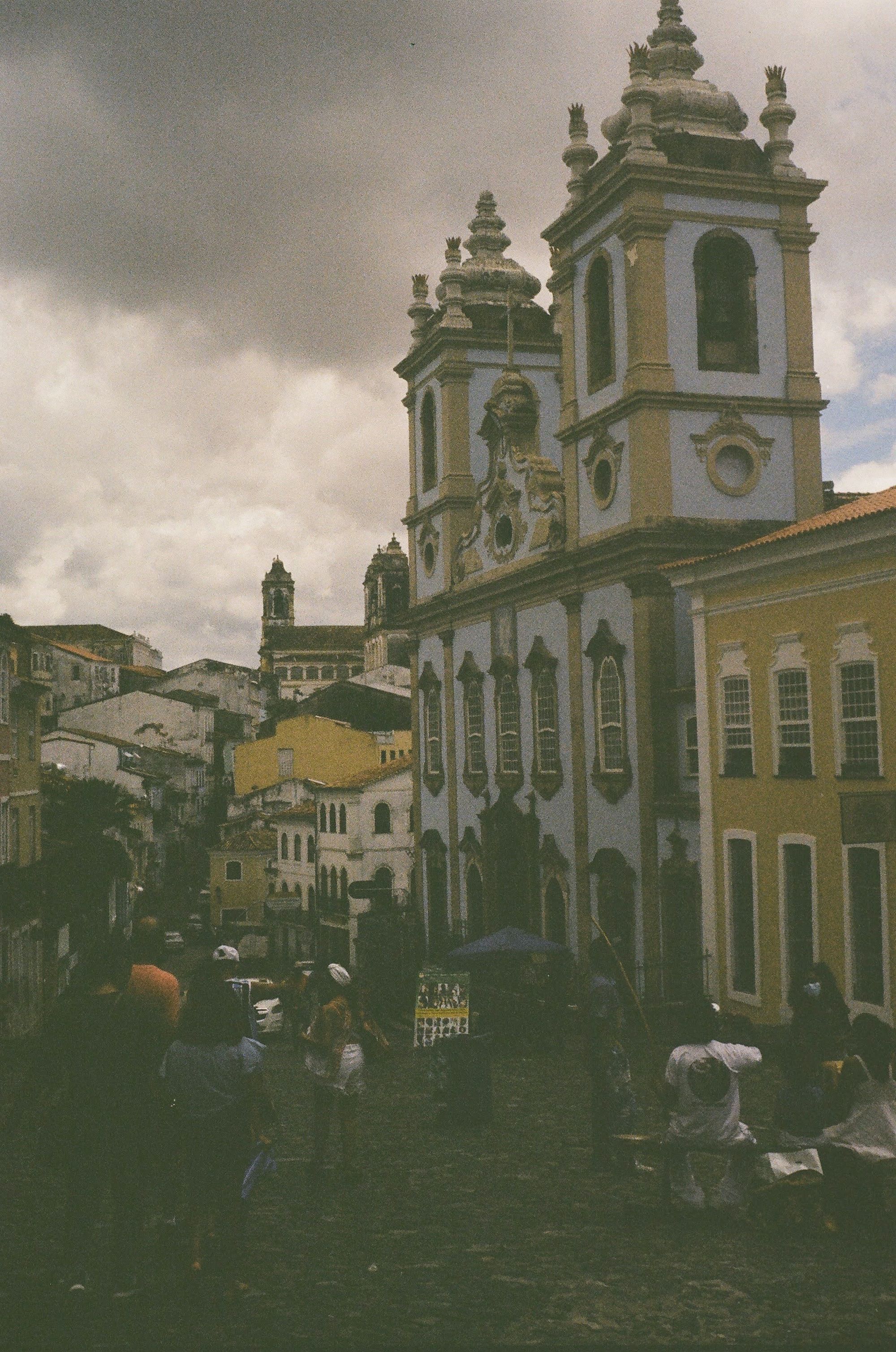
WORTH A LOOK 👀
It is for example where Michael Jackson's video clip "They don't care about us" was shot (well, partly because Christ the Redeemer is in Rio de Janeiro!)
The group Olodum has also collaborated with Paul Simon or Jimmy Cliff.
I was very lucky to meet Jeff, a Brazilian who was used to hosting people via the Couchsurfing platform on the first day. Thanks to him, I visited Pelourinho in a different way, as he knew almost all the street vendors and knew exactly where to be every night.
He gave me some nice tips about places to go:
📍THE LOCAL TIPS
- The Clube do Samba along the Terreiro de Jesus (entrance through the souvenir shop): Samba nights in the evening, always very good quality and a great atmosphere!
- The Fondation Casa de Jorge Amado: One of the greatest Brazilian writers, I read several oh his books during my trip. His most famous book is: « Gabriela, Clove and Cinnamon »
- The bar Zulu for the good, cheap beer & food with vegetarian options
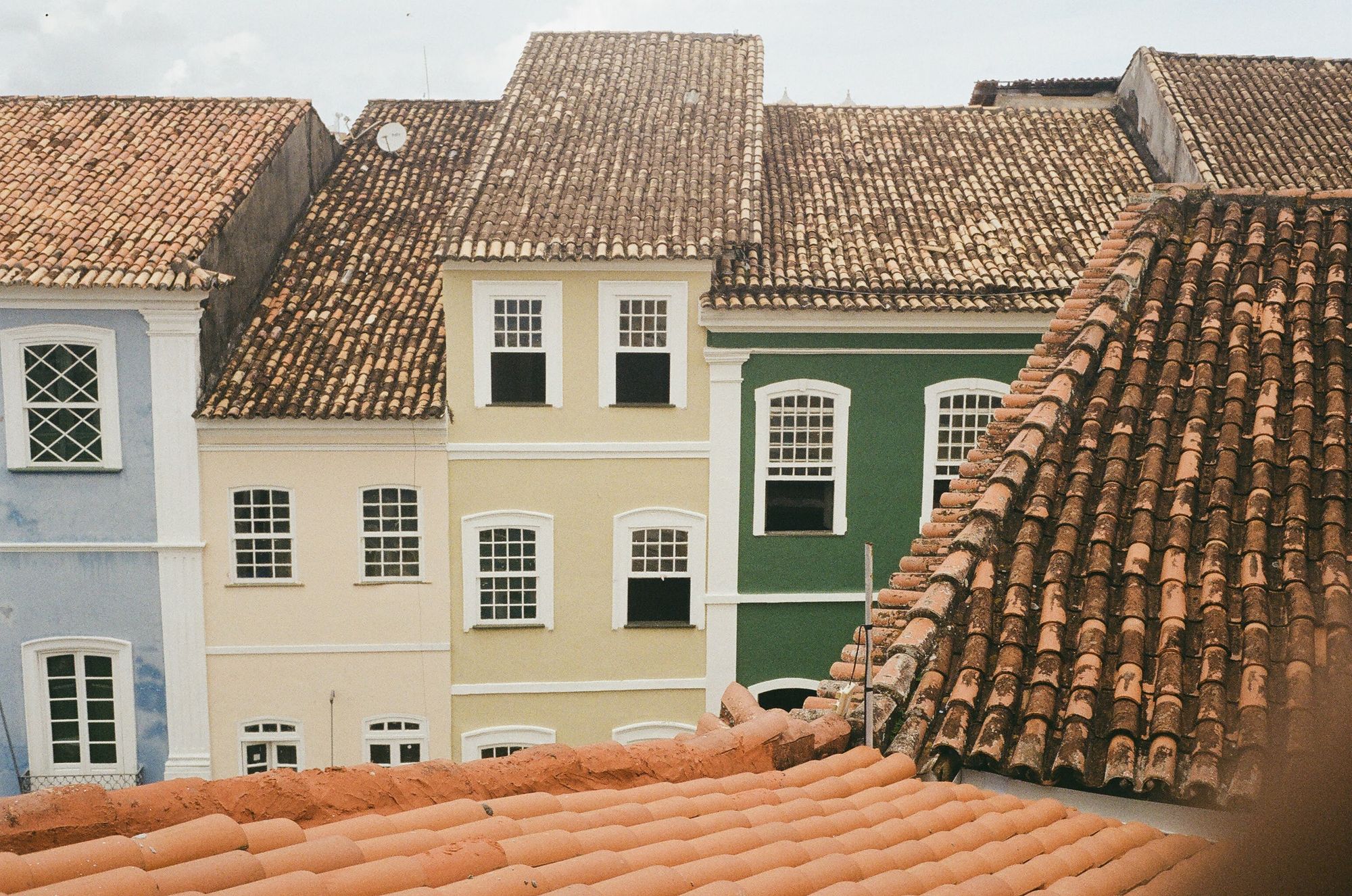
Capoeira:
Thanks to him, I also had the chance to assist to a "Roda"(a circle) of Capoeira on the main Terreiro of Pelourinho. He knew the participants and even introduced me to the "Mestre", the teacher, the one who sings the words influencing the game. In Capoeira Angola, such as the one I attended, he is often accompanied by three berimbau (a typically Brazilian struck musical bow), two pandeiro (a kind of tambourine), an atabaque (drum), a reco-reco that is scraped and struck, and an agogo (a kind of bell).
The participants are really focused and it is pretty clear that this is not a simple sport (unlike other Capoeira "performances" I have seen in Europe) but rather a somewhat hypnotic ritual, intensified by the repetitive chants and rhythms. At the end of the "Jogo", the two capoeiristas of the centre conclude by exchanging friendly smiles, breaking with the almost war-like aspect of the "fight" they just had.
Bahian cuisine:
I also wanted to talk here about Bahian cuisine, at least about the dishes I tried. Indeed, the cuisine holds an important place in the culture of the region, because it is closely connected to rites and traditions. Like the Caribbean gastronomy for example, it has also been naturally influenced by the African culture and uses many ingredients imported to Brazil by the Portuguese (palm oil, banana, yam or combos for example).
One of the most famous street food is the Acarajé, a type of fried white bean cake filled with shrimp, salad and/or peanut paste. In the Candomblé religion (a religion that mixes African beliefs with Catholicism), Acarajés are in fact offerings to the Orixas (the various Candomblé gods). Even today, this dish is considered sacred and only certain women from certain families are allowed to prepare it. They are often dressed in traditional clothes.
I also tried and liked the Moqueca. This is also a Bahian dish, often made with fish or crab simmered in a sauce (here vegetarian), rice, Farofa ( Manioc flour) and sauce.
💛 I LIKED
- The Acarajé da Cira, at the Rio Vermelho square (rated as the best and most traditional one)
- On Sundays, go for a walk on Avenida Beira Mar: very busy, full of families of locals, small "Barracas", seafood restaurants and popular Brazilian beach dishes. Not far away, try the Museu do Sorvete for the delicious ice cream
- Not Bahian cuisine, but still worth mentioning: the Peruvian restaurant O Peruano »run by a young Peruvian woman who cooks and do the service at the same time. Not exactly a fancy place but it's delicious!
2 de Fevereiro, Dia de Iemanjá
February 2nd is the day of Iemanjá, the goddess of the sea and the rivers and the mother of all Orixás, the divinities of the Candomblé religion.
Candomblé is a Brazilian religion, a mixture of African divinities brought by slaves, Indigenous beliefs and the Catholic religion of the colonists. As the colonists forbade any other practice that was not Catholic, the slaves and indigenous people slowly integrated their divinities with the Catholic saints in order to be able to worship in a more discreet way.
Candomblé is still widely practised today, particularly by the black and mixed populations of Brazil.
During the Iemanjá celebration, offerings are thrown into the sea, especially flowers. It is believed that if the flowers return to the shore after being thrown into the sea, it means that they may have been rejected by Iemanjá and therefore potentially that the wishes and prayers will not be fulfilled. Many people therefore take small boats to throw their offerings and make their prayers in the middle of the water, as close as possible to Iemanjá.
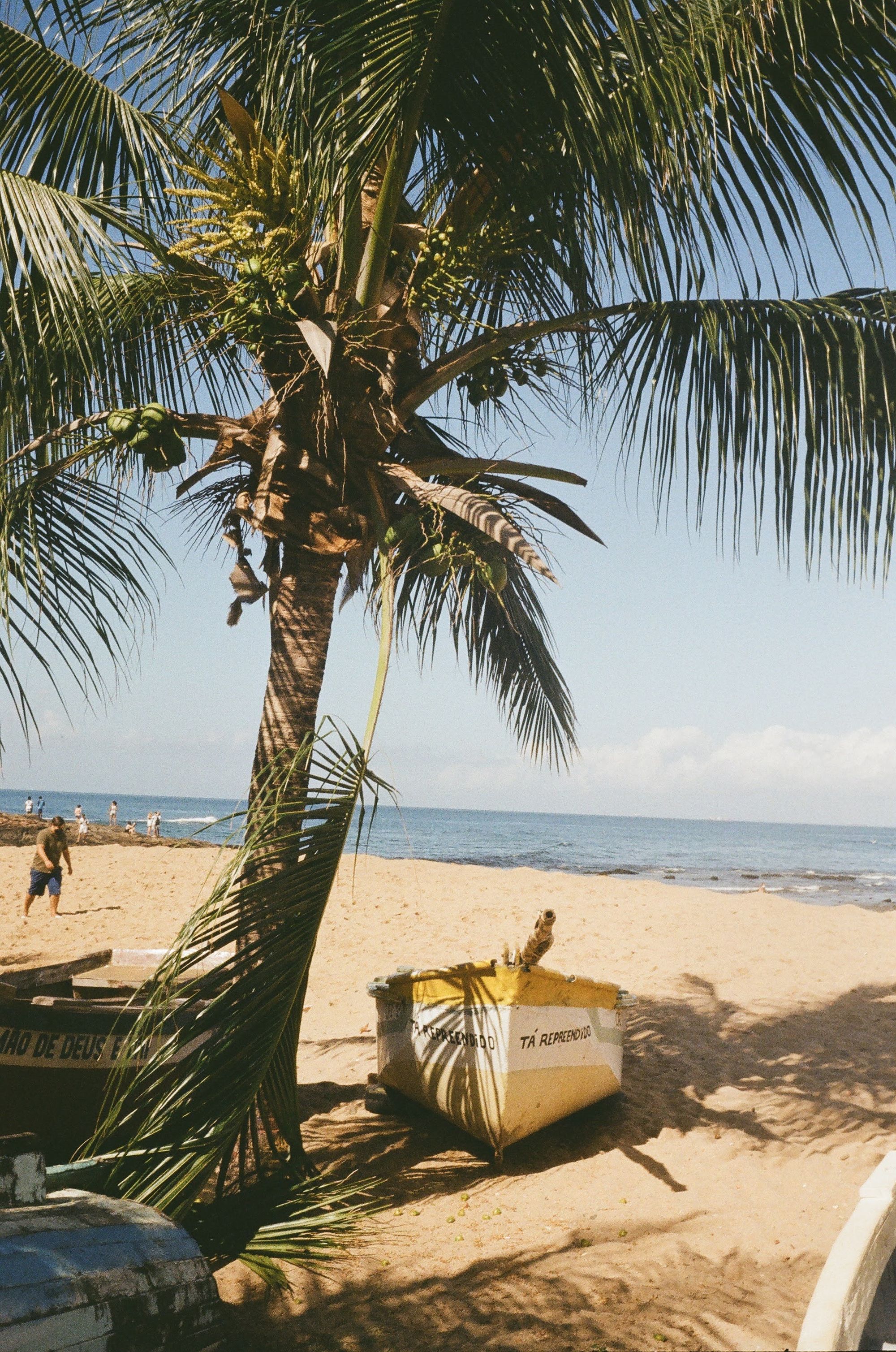
Extract from my travel diary:
"The day begins at midnight with celebrations, and finishes the next day. It is a tradition to get up early and go to the beach at sunrise in Rio Vermelho, a neighbourhood of Salvador.
This is exactly what my dorm mates did, all dressed in traditional white clothes from head to toe. I instead met up with a new French friend, Anne, around 8am at the entrance to the Rio Vermelho. This year, the main beach being closed, the ceremonies were reduced, but still took place a bit further. Several people all dressed in white stood on the cliffs to pray and throw flowers into the sea. On the beach, two men were blessing people with sea water (mostly women) while singing. We then met Juliana, a Brazilian woman from Rio, and took a boat together. Juliana sang and thanked Iemanjá, while we threw our flowers into the sea.
On our way back, we stopped at the main square of Rio Vermelho to have an Acarajé, the specialty of Bahia and also considered a sacred food since it can only be cooked by women from certain Bahian families.
Juliana told us that she had spent the day before with Bahian women, preparing offerings and taking herbal baths in order to prepare for the February 2nd celebration and pay homage to Iemanjá"
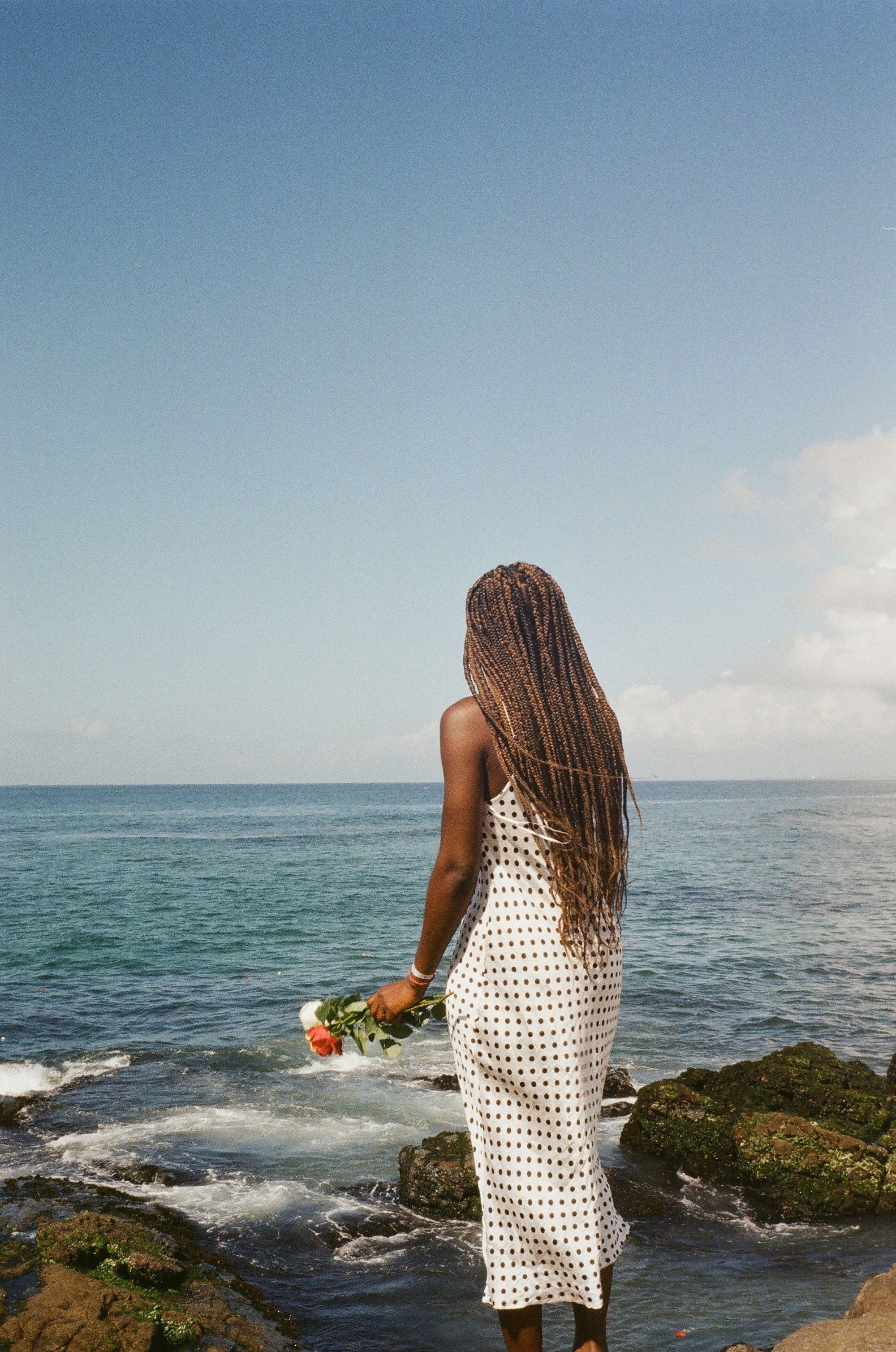
The following pictures were taken at the Bonfim cathedral and shows the famous bracelets in remembrance of the "Senhor do Bonfim". Again, this is a tribute to the Candomblé religion as each colour represents an Orixá, the Candomblé gods. It is customary to make two turns before tying three times around the arm, while making three wishes. The wishes should come true when the bracelet falls off, but they must absolutely not be cut!
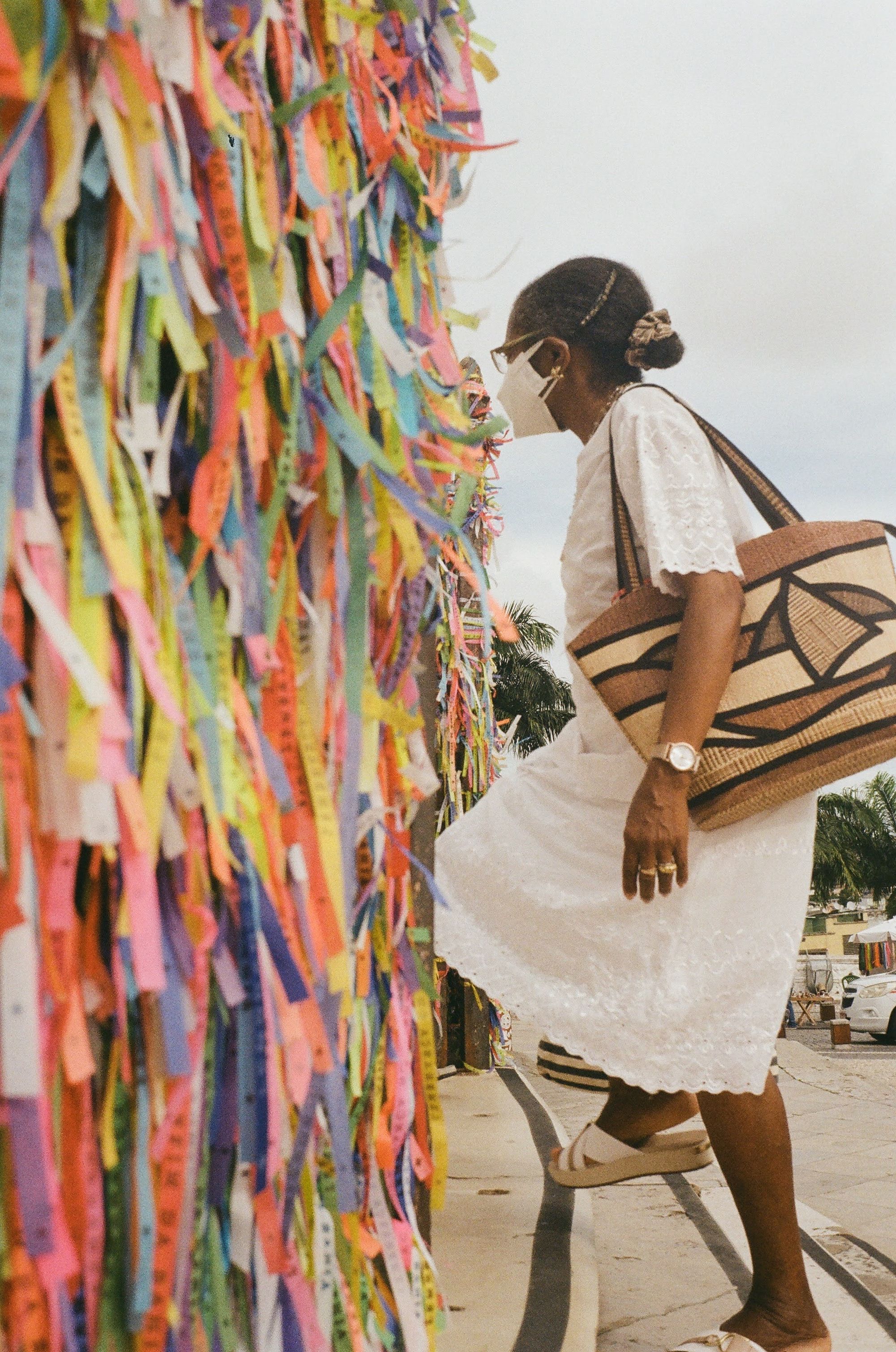
The Museum of Modern Art of Bahia, the MAM:
I also visited the Museum of Modern Art, the MAM. It displays many pieces by local artists and craftsmen and is located not far from the main port and close to a small favela. This "favela" (the word "communidade" is more commonly used today as it is less stigmatising), is rather "tranquilo" as the Brazilians like to say, i.e. rather safe. There are often concerts on the terrace between the museum and the beach!
Museu do Carnaval - the Carnival Museum:
This is a must-see in Salvador, especially because of the magnificent costumes. Carnival started with the European settlers wanting to imitate the Venetians, then the slaves and natives took it over until it became the huge popular festival it is today (except this year...). The most famous carnival singers are real rock stars and most of the songs are known by almost all Brazilians. I already knew Daniela Mercury who played several times in the Montreux Jazz Festival (where I worked for two years), but there are also for example Clara Nunes and many others.
La Cidade da Musica - the City of Music:
Another very interesting museum is the City of Music. Thousands of hours of audio and video archives trace the history of Bahian music. The most famous singers and topics in Europe are Gilberto Gil and João Gilberto, both from Bahia, and the "Tropicalismo". This is an intellectual and artistic movement from the 1970s, in opposition to the military dictatorship of those years. The best known representatives are Gilberto Gil and Caetano Veloso, but also Gal Costa, Os Mutantes, Torquato Neto, Capinam, Tom Zé, Nara Leão and Rogério Duprat, who released the manifesto album "Tropicália or Panis et Circencis". Gilberto Gil and Caetano Valoso were later arrested and detained at home by the generals in power, then forced into exile, gradually putting an end to the movement.
There is so much to say about Brazil and the Bahian culture... I can't limit myself to one article, and this one is long enough. In four months, I have been able to capture several fragments of Brazilian diversity, and it is sometimes difficult to describe the sounds, smells and colours in a blog. But I'll try anyway, and I hope you enjoyed this first article!